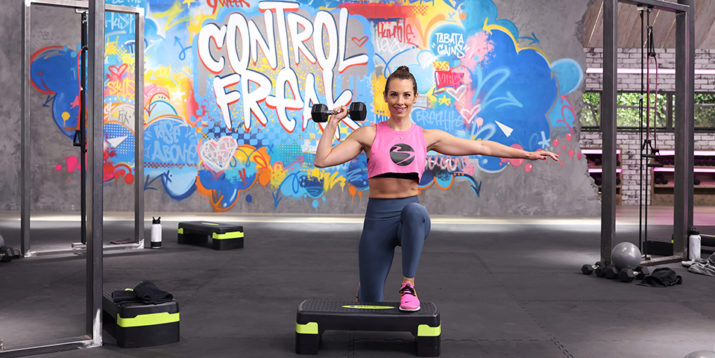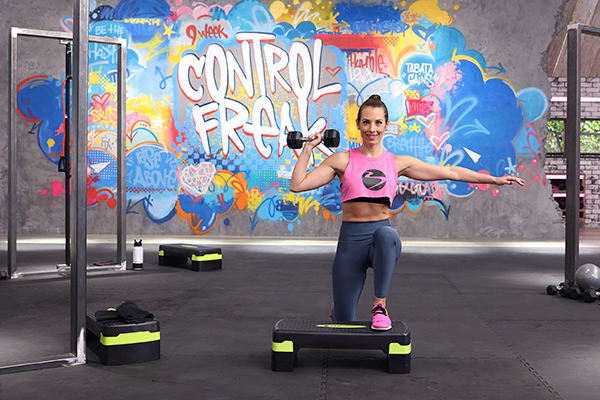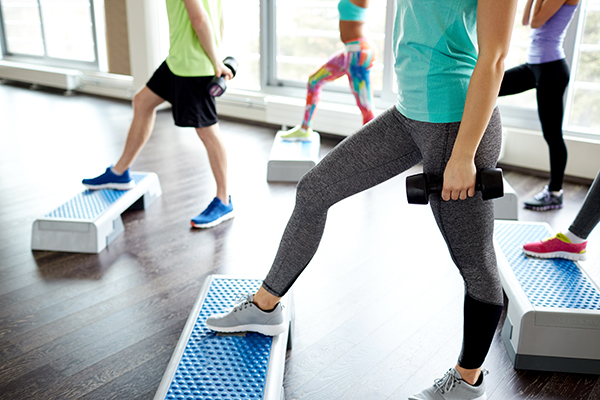5 Reasons to Add an Exercise Step to Your Workout

It was impossible to step into a gym in the 1980s without seeing Spandex-clad women on their way into a step aerobics class.
These group fitness classes might’ve seemed like a fad, but these women knew the secret: Working out with an aerobic step can be a sweaty, high-intensity workout that torches calories.
But can step aerobics be enough of a cardio workout to deserve a spot in your exercise regimen? Most definitely!
Here’s everything you need to know about its fat-burning benefits.
1. You Can Do It (Almost) Anywhere
All you need to get started is an aerobic step, or exercise step.
An aerobic step is typically a plastic platform outfitted with a nonslip surface on the top.
It’s usually only a few inches tall, but many types of aerobic steps can be modified with risers that make it taller (and more challenging).
As long as you have an even, non-slip surface, you can get in a sweaty step workout.
Many gyms offer group step aerobics classes, but you can also do an at-home workout program like 9 Week Control Freak with Autumn Calabrese.
The strength and cardio workouts incorporate an exercise step throughout the workouts to help you build muscle, shed fat, boost endurance, and increase definition.

2. It Gets Your Heart Pumping
If you’ve ever felt winded after walking up a flight of stairs, you understand how steps can increase your heart rate.
“Stepping up and down increases the activity of the bigger leg muscles” like the quads and glutes, says Cody Braun, CPT, Assistant Manager of Fitness at Beachbody.
This activation “requires a lot of blood and oxygen that ultimately elevates the heart rate,” he explains.
3. You Can Dial-Up (or Dial-Down) the Intensity
Specific workouts — like running and jumping rope — are great for cardiovascular fitness but can be hard on joints because they’re high impact.
Workouts centered on the aerobic step, on the other hand, are low-impact because one foot is always on the ground while you step up and down.
This can make it easier to get started if you’re just beginning an exercise routine.
“You can even just start with the movements on the bare floor before adding an exercise step,” says personal trainer Hannah Daugherty, NASM, ACE.
“Make sure your entire foot lands on the step before going up or down, and try to step softly as you go up and down to reduce the pressure on your knee joints.”
But it doesn’t have to stay low impact if you want more intensity. You can even add resistance bands, balls, and kettlebells to make a more challenging workout.
“The versatility of the step allows you to modify exercises as needed,” says Braun.

4. It Torches Calories — and Keeps Burning Them
Looking to maximize your calorie burn in a short amount of time? Add in an aerobic step.
“Classes that utilize the step are great for weight loss because as the heart rate increases, the caloric burn increases,” says Braun.
Doing a step aerobic workout for 30 minutes can burn anywhere from 210 to 311 calories, depending on your routine’s intensity.
But the calorie-burning benefits don’t stop with your cooldown.
“The increased muscular activity that happens when you use an aerobic step during a workout aids in caloric burn during the muscle repair process,” adds Braun.
You’ll continue to burn calories long after the class is over. This is known as the “afterburn effect,” or excess post-exercise oxygen consumption (EPOC).
5. You’ll Build Muscle and Bone Strength, Too
While using an aerobic step in your workout is an excellent cardio workout, the benefits don’t stop there.
“You use multiple muscle groups when you do a step up,” says Daugherty. “It activates and strengthens the glutes, hamstrings, quads, and calves,” as well as the core because you use balance when stepping up from the floor onto the aerobic step.
Research shows that step exercises can also help improve bone strength over time.
